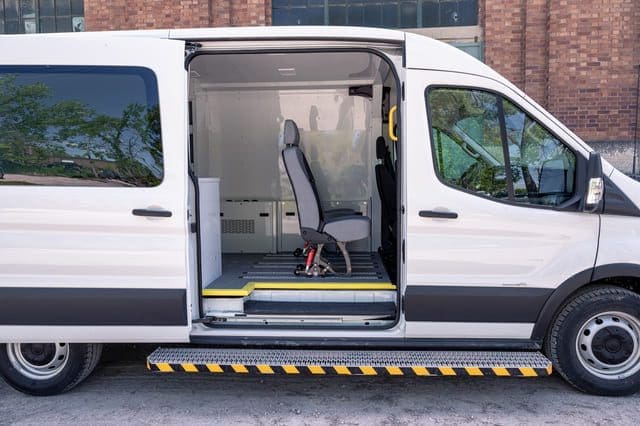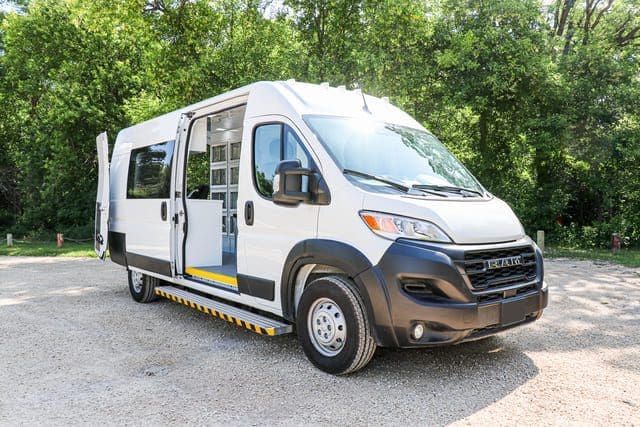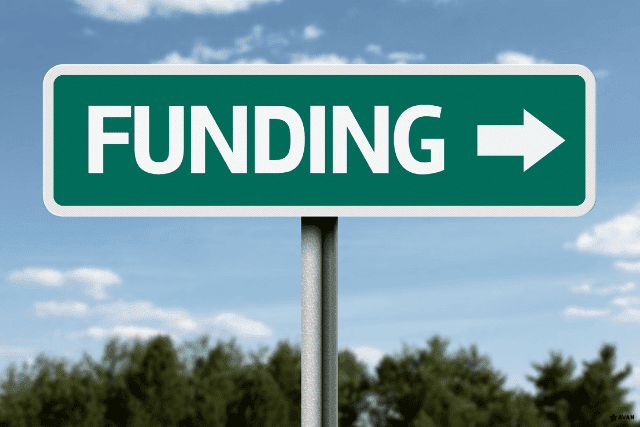Is your organization considering purchasing a mobile outreach van but you’re unsure of where to deploy it in the U.S.? Deploying a mobile outreach van in the wrong area can lower the effectiveness of your outreach program. Bringing it to the wrong area will result in your program having a lower impact and won’t reach your intended target clientele.
At AVAN Mobility, we manufacture mobile outreach vans so that community support programs can provide outreach services to targeted communities around the country. We’ve been manufacturing these vans and distributing them to organizations all over the U.S. for the past ten years.
In this article, you’ll learn about the top 5 areas to deploy a mobile outreach van in the U.S. You’ll also learn about why each area is suitable for deploying there.
What is a mobile outreach van?
Mobile outreach vans are used by programs or organizations that provide mental health and addiction counseling, help for homeless and drug-addicted individuals, overdose prevention, harm reduction, and referral services. They also help those needing external support for daily life. Connecting with people where they are at in life builds trust.
Your program or organization can use mobile outreach vans to do that with vulnerable populations around the country. Unlike regular clinics, mobile outreach vans are on the move, making it easier to provide on-site help.
Why mobile outreach vans?
In many cases, underserved communities are close-knit ones. A lot of homeless or drug-addicted people face stigma when going to regular clinics. They often prefer to keep their struggles private. Going to a clinic can expose their addiction to others, and that can cause embarrassment.
If you walk into a hospital with a drug problem, you’ll sit in triage for 8 – 10 hours waiting to be seen, if at all. Additionally, medical care in the U.S. is extremely expensive. If you’re homeless or addicted to drugs, the odds aren’t in your favor to afford proper medical attention.
Homeless and drug-addicted individuals also often have a lack of trust in healthcare providers. Transportation challenges also prevent them from seeking help.
Mobile outreach vans provide organizations the chance to meet people where they are and provide services to them. There are many areas around the country where mobile outreach vans work well. You’ll learn about that next.
5 areas to deploy a mobile outreach van in the U.S.
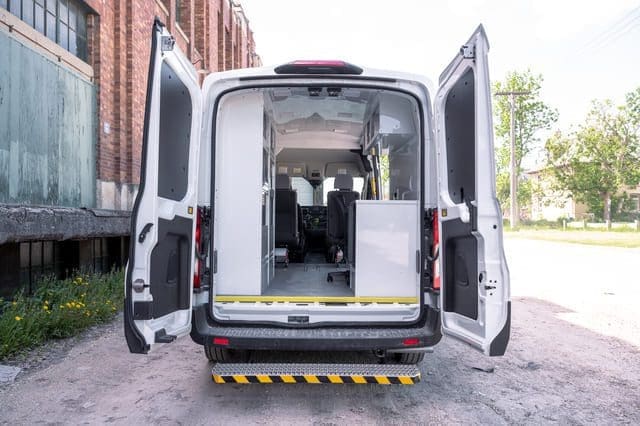
Now that you know more about mobile outreach vans, you might be wondering what areas of the U.S. they should be deployed in. In this section, you’ll learn about the what, where, and how of 5 places they can be deployed to make the biggest difference.
1. Homeless camps
What: According to the U.S. Department of Housing and Urban Development, there are around 553,000 homeless people in the U.S. Homeless camps often don’t have easy access to important medical services. Sending mobile outreach vans to homeless camps can offer medical care, help with mental health, and offer things like food and places to clean up.
Where: Los Angeles is one of the specific locations in the U.S. where homeless camps are unfortunately common. This sprawling metropolis on the West Coast is known for its beautiful weather and vibrant culture, but it also faces a homelessness crisis.
Skid Row in downtown Los Angeles is notorious for its large concentration of homeless individuals. It’s a neighborhood where tents and makeshift shelters line the streets.
Seattle is another place in the U.S. where you can often find homeless camps. This city is known for its technology and nature but has a big problem with homelessness. The middle of the city, including parts of Pioneer Square and Capitol Hill, sometimes have homeless camps you can see while walking past these areas.
How: Your mobile outreach van can park near homeless camps, making it easier for folks to get help without having to travel far.
2. Areas with addiction issues
What: Some communities have more problems with addiction than others. Outreach vans can go to these spots and provide services to reduce harm, addiction counseling, and help people find treatment if they want it.
Where: East Harlem is a part of Manhattan, New York where many people deal with addiction. Outreach vans can help by talking to people about addiction and connecting them to places where they can get help. According to the NYC Health Department, New York has been dealing with a rise in opioid-related deaths since 2021.
The Old Town and Chinatown areas of Portland have also seen a rise in addiction challenges. Outreach vans can offer harm reduction services, overdose prevention education, and referrals to addiction treatment centers in this area.
How: Regularly using your organization’s mobile outreach van to visit these areas will help build trust with the community and make it easier for people to ask for help.
3. Impoverished Communities
What: In neighborhoods where people struggle with poverty, it can be impossible to get healthcare or social services. Mobile outreach vans can help by giving check-ups, shots, and information on obtaining assistance.
Where: Chicago has several specific neighborhoods and areas known for facing significant challenges related to low income and poverty. These areas also have large enough populations to support mobile outreach. Two notable ones are West Garfield Park and Englewood.
Cleveland also has a few neighborhoods where many people face financial concerns. East Cleveland and the Central/Kinsman areas both have histories of financial hardship.
Aside from these places, a great deal of the U.S. is in poverty. About half of the country lives below the poverty line, and you don’t have to look too far to find populations that can use help from your mobile outreach van.
How: Your mobile outreach van can be set up near community centers or parks in these areas and be accessible to people who are struggling financially.
4. Near homeless shelters
What: Shelters and places where people stay temporarily are important staples for the unhoused. Outreach vans can help in these areas by providing healthcare, supplies for hygiene, and helping people find permanent places to stay.
Where: New York City is an area of the U.S. where many individuals struggle with homelessness. If your mobile outreach van parks near shelters in New York like Bowery Mission or the Safe Horizon Domestic Violence Shelter, you’ll be able to provide support, referral services, mental health counseling, and resources to help people. This is particularly important for women and children in these communities.
Los Angeles is another area with many shelters and temporary housing options for people needing a safe place to stay. To have the greatest impact, consider parking your mobile outreach van near the Union Rescue Mission or the Midnight Mission shelter.
How: Visiting shelters and temporary housing sites regularly ensures that people can access services when they need them the most. When your mobile outreach van is near a shelter, it’s more accessible to individuals staying there. People can access your van’s services without having to travel far.
5. Native Land Reservations
What: Native Land Reservations in the U.S. face challenges in accessing healthcare, especially when facilities are hours away. A lack of reliable transportation makes it difficult to get medical attention for many health problems, including drug addiction.
Where: Reservations in South Dakota have many residents who don’t have good access to medical-related services. This would be an ideal location to set up a mobile outreach van.
How: Your organization can bring its mobile outreach van directly to the rural communities in need of help. Doing so will solve the challenges that rural communities face in accessing services.
What’s next?
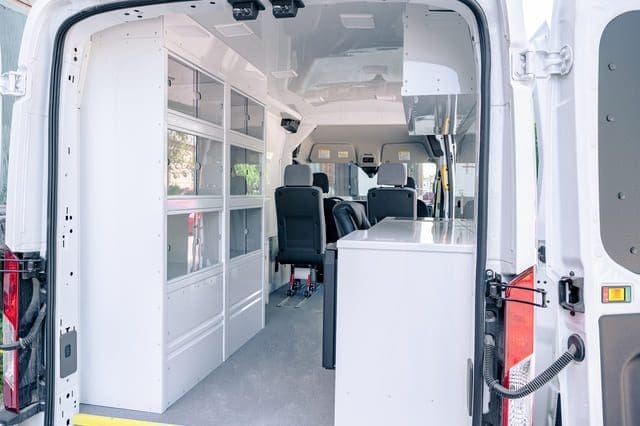
You landed on this article because your program or organization is interested in getting a mobile outreach van and you’re not yet sure of your target market.
You’ve now learned what areas you can deploy a mobile outreach van in for the best results.
At AVAN Mobility, we’re all about helping organizations like yours reach your goals. We do this by manufacturing innovative vehicles that are accessible to everyone.
If you’re searching for mobile vehicle options that help you take your services to your clients and make healthcare more accessible, we have solutions for you. Talk to an expert today to learn more about our mobile outreach vans.
Now that you know more about who your target market might be for your organization’s mobile outreach van, you might be interested in learning about how we compare to different manufacturers.
Take a look at these articles for a detailed look at that:
Magnum Mobile Specialty Vehicles vs AVAN Mobility: Product Comparison
